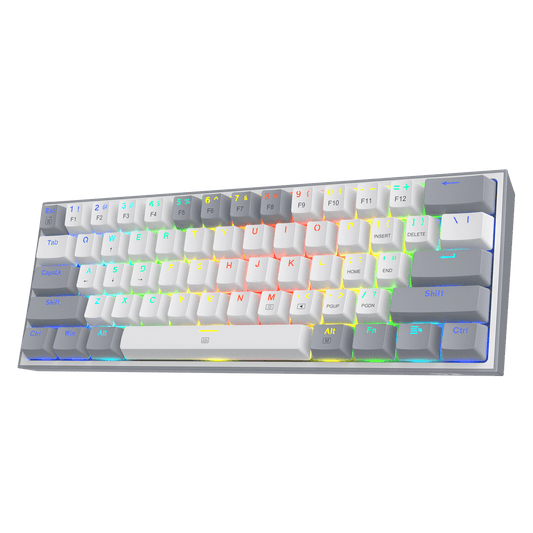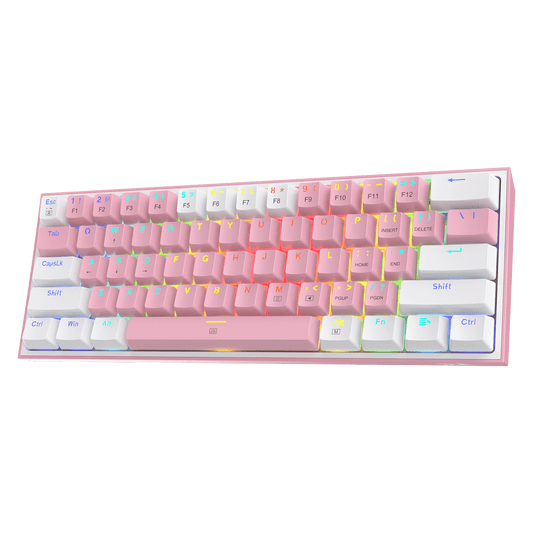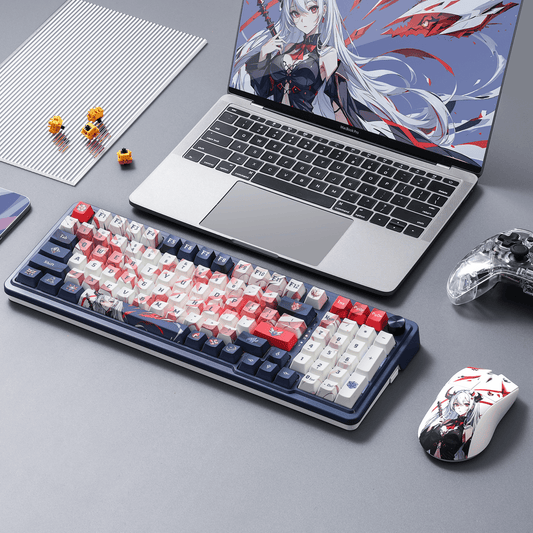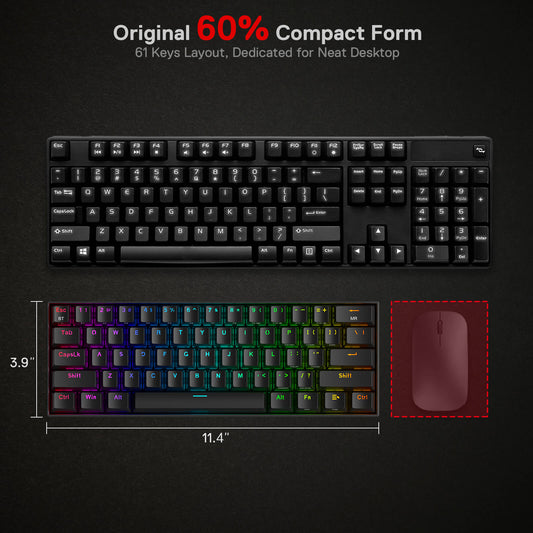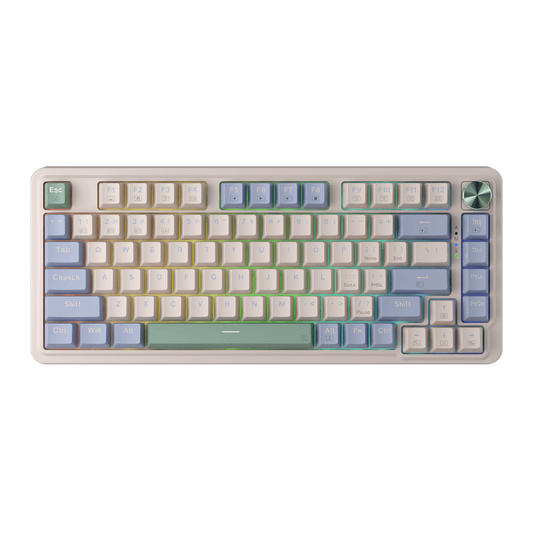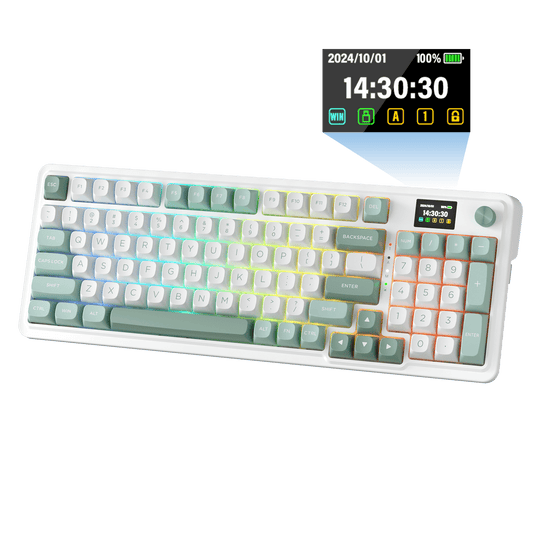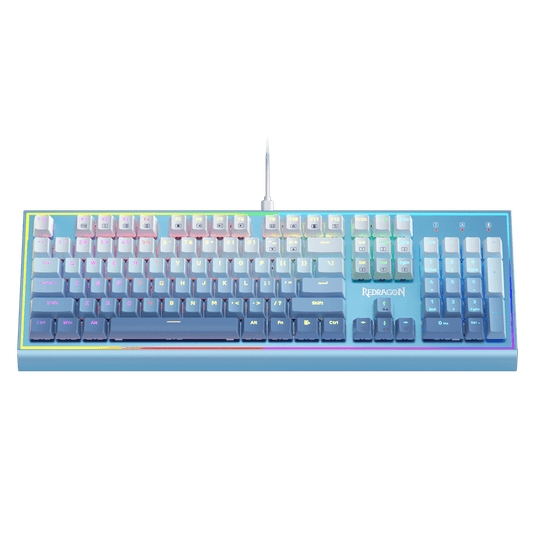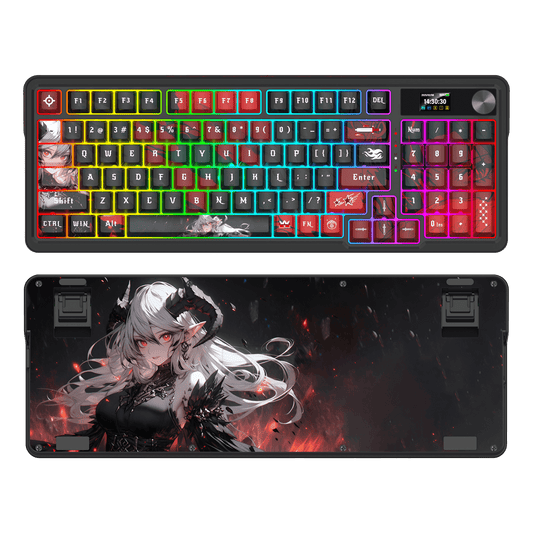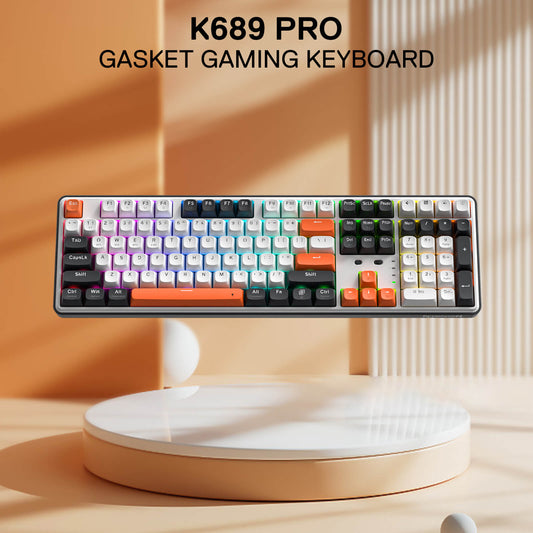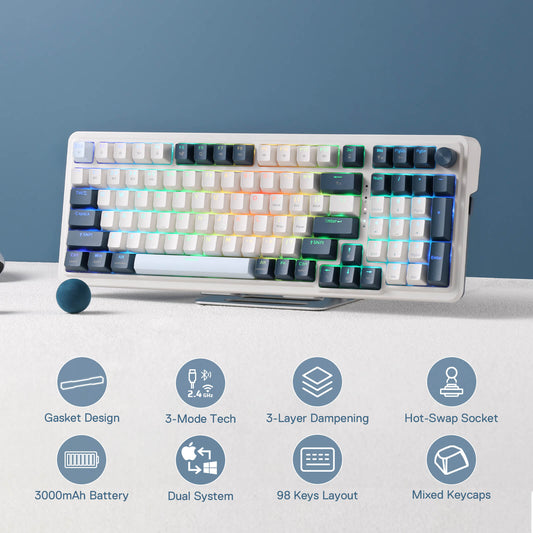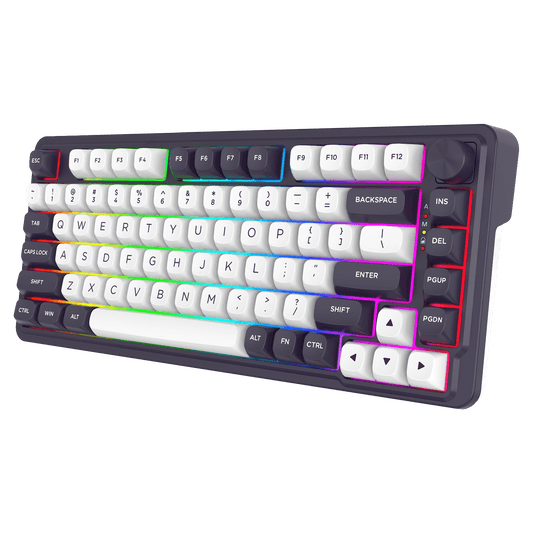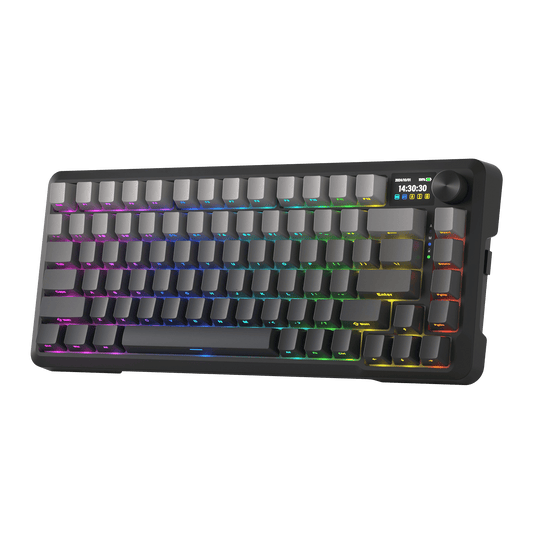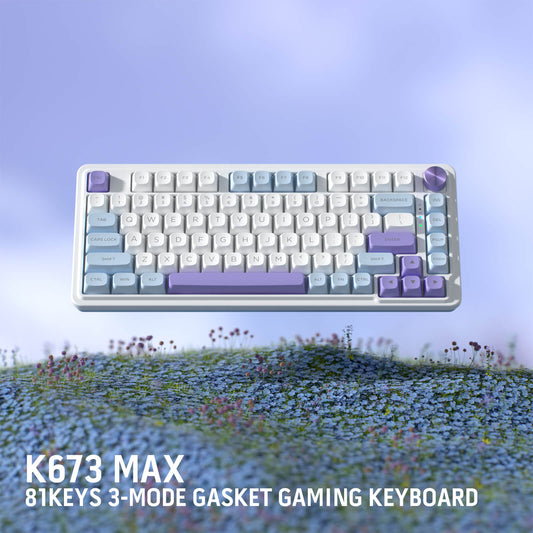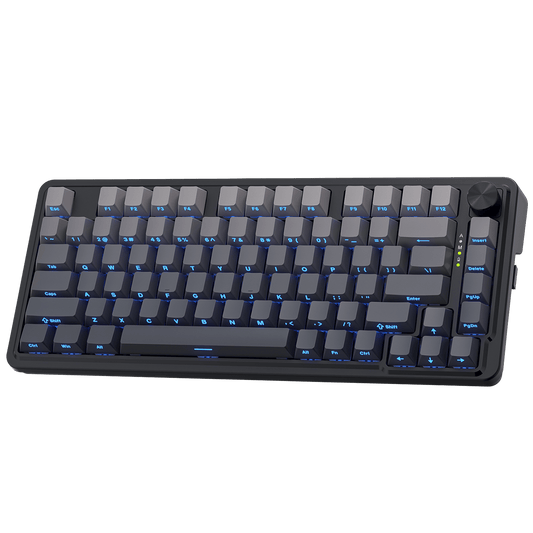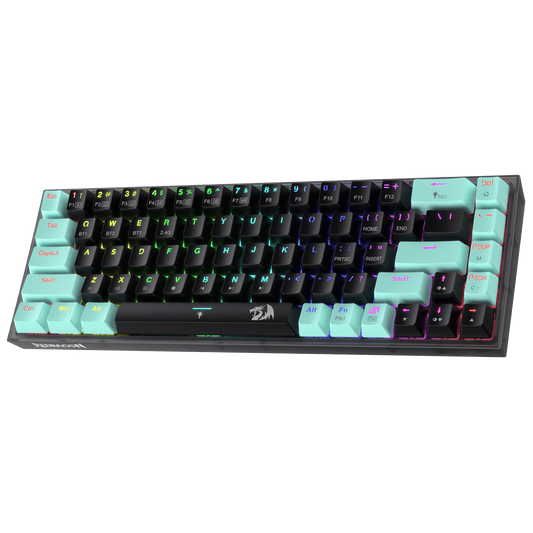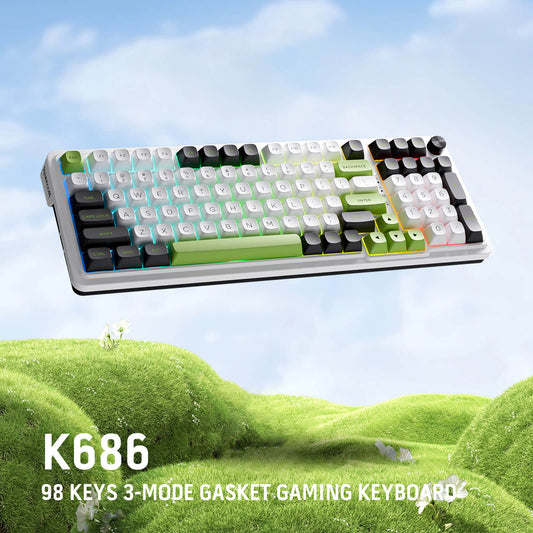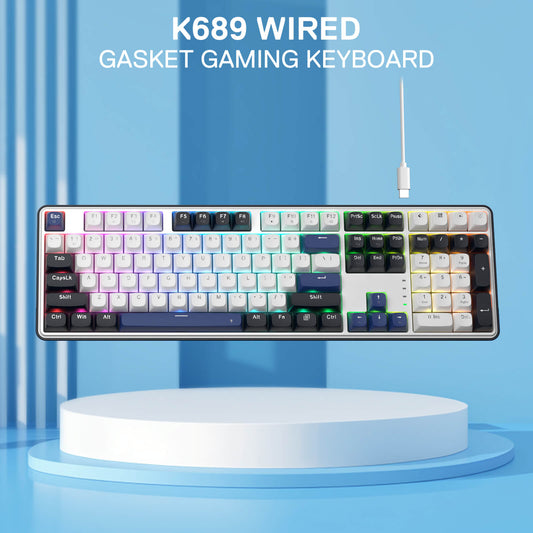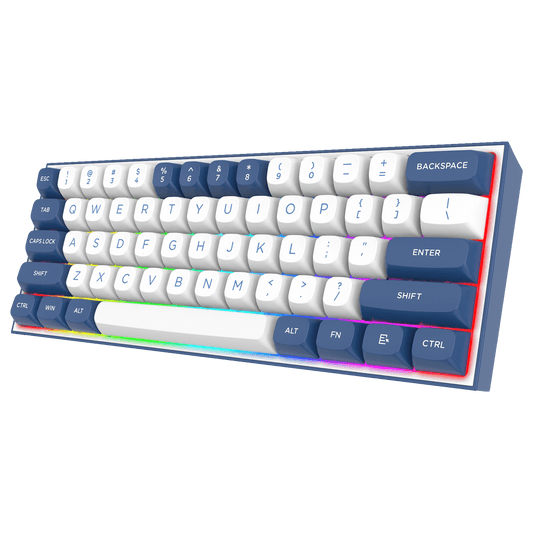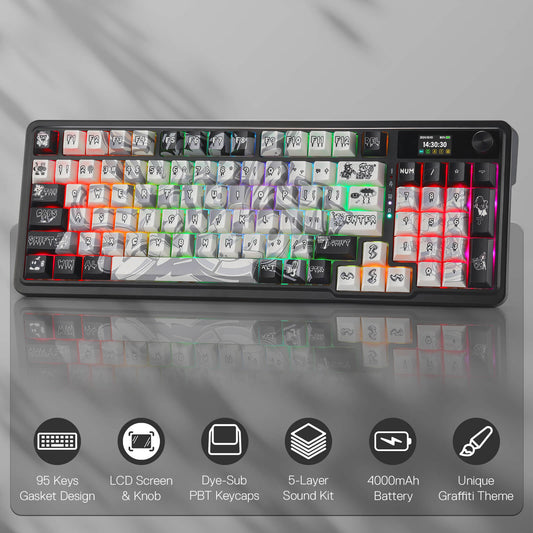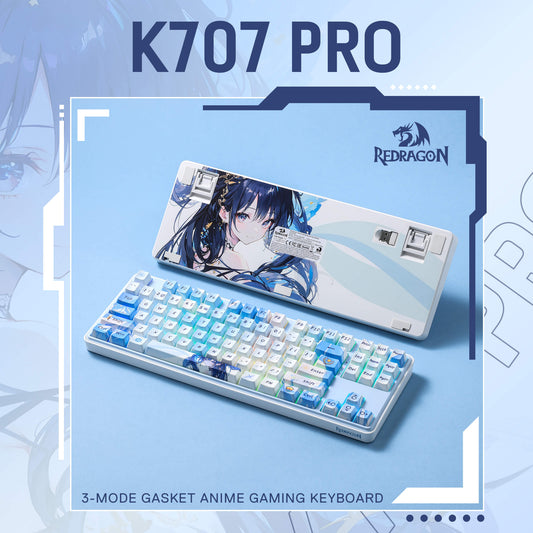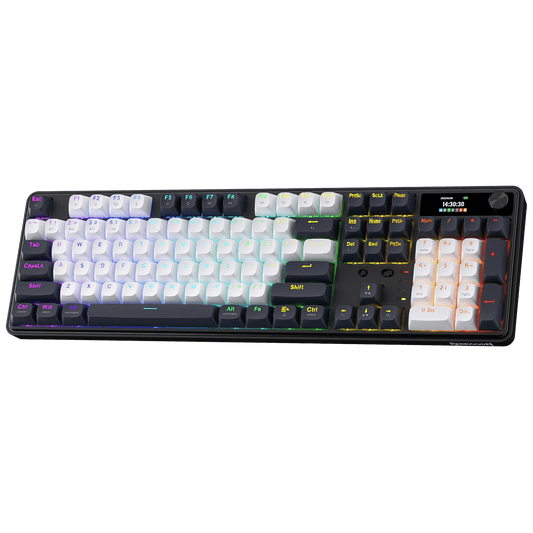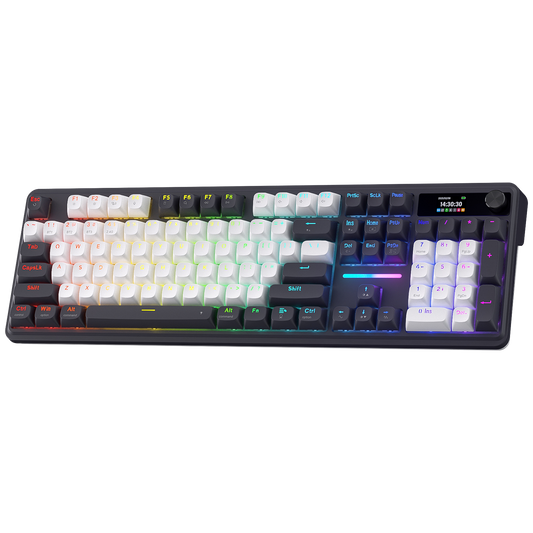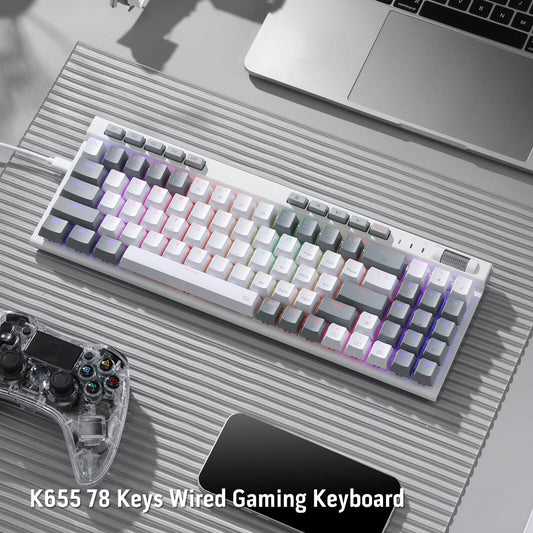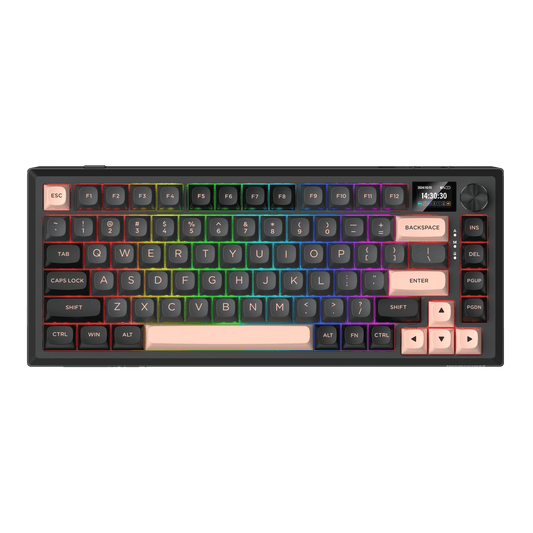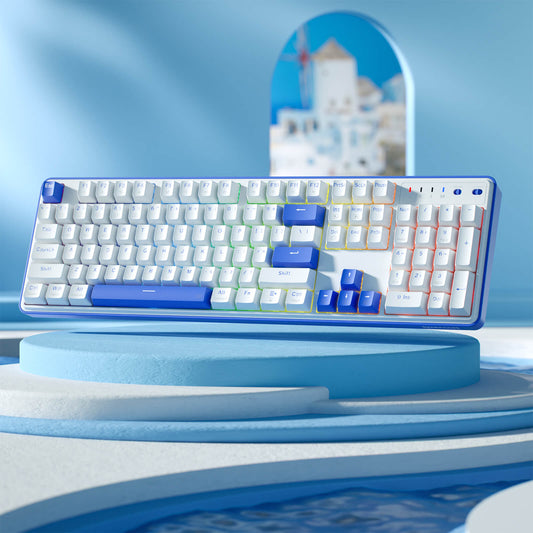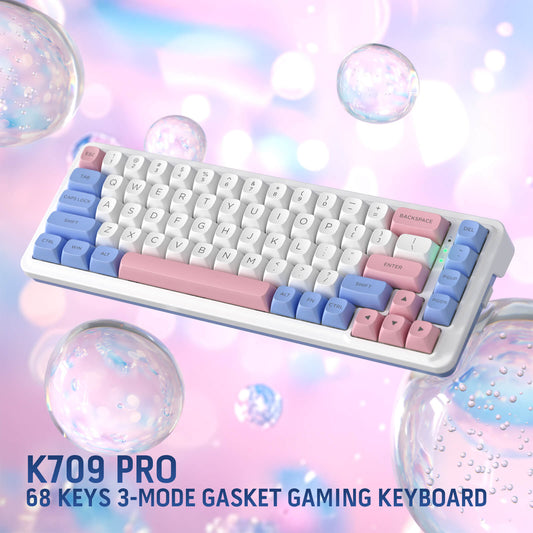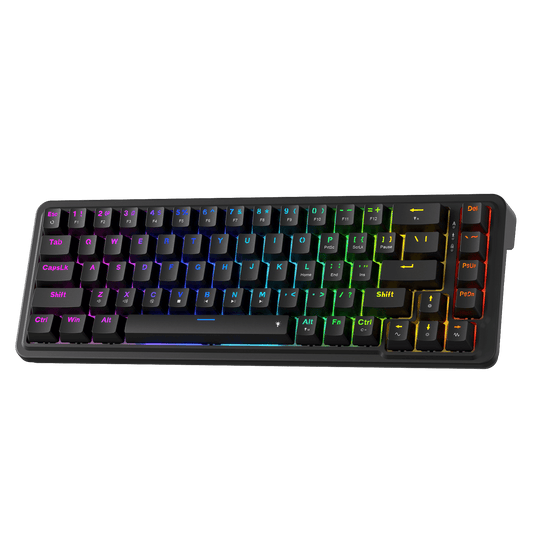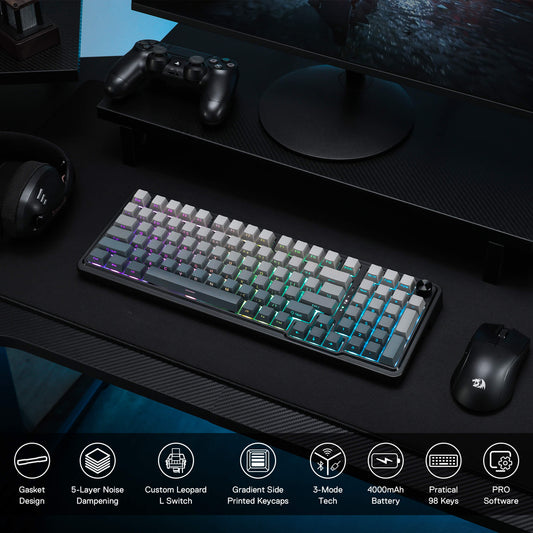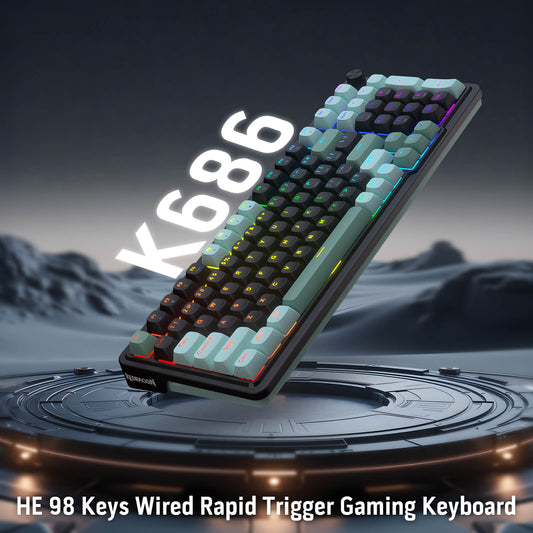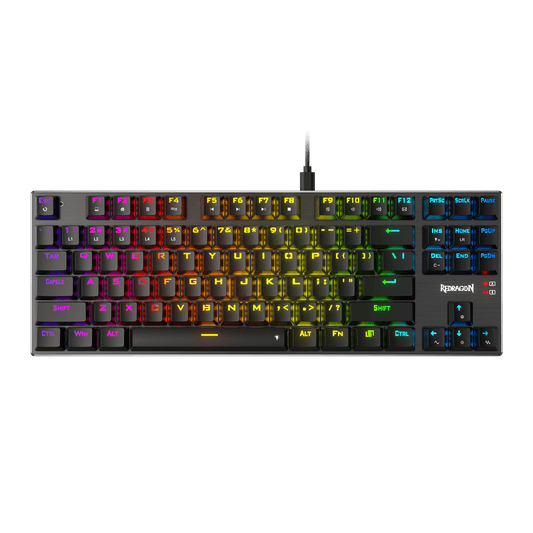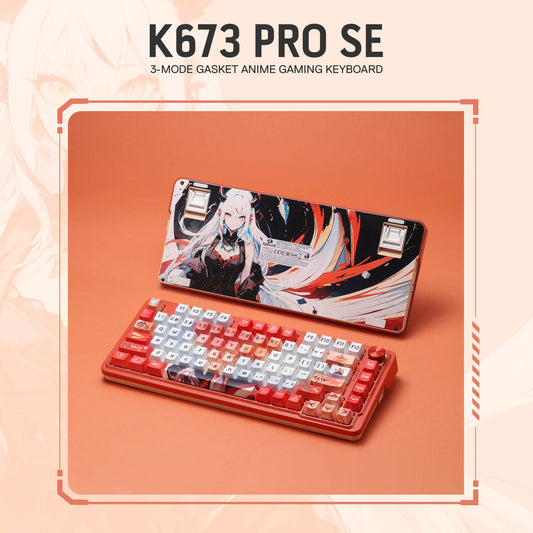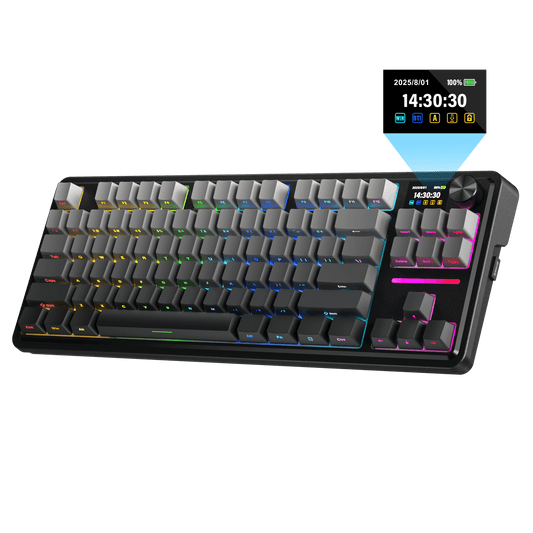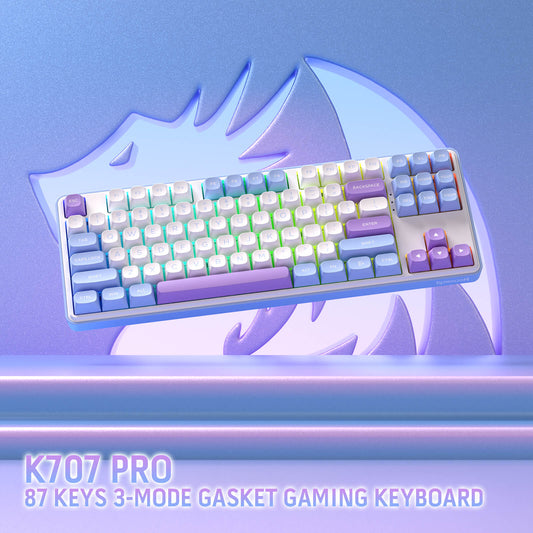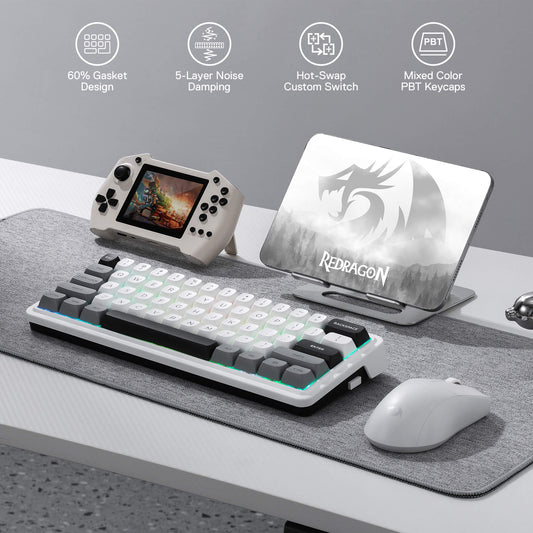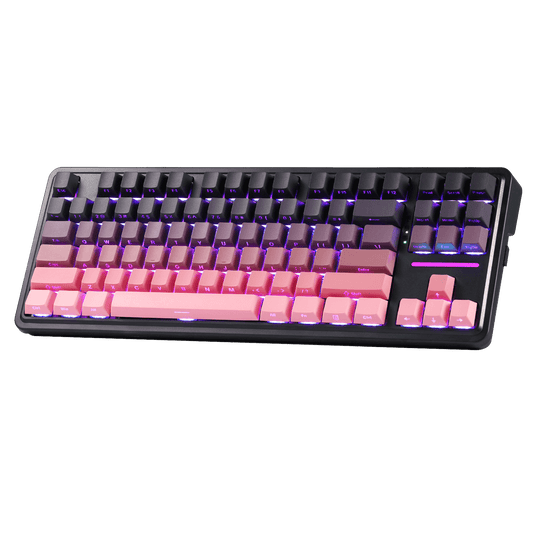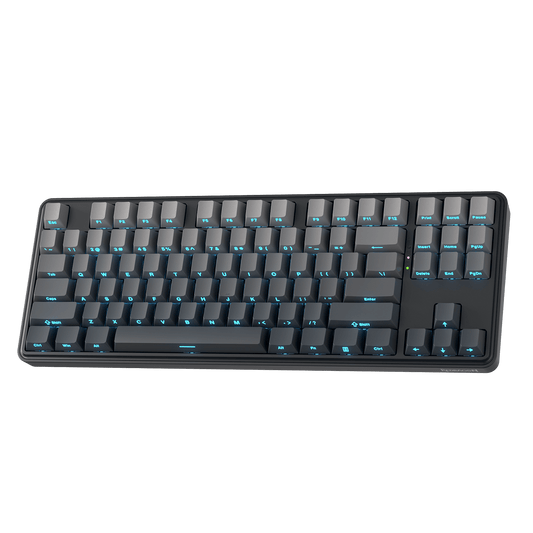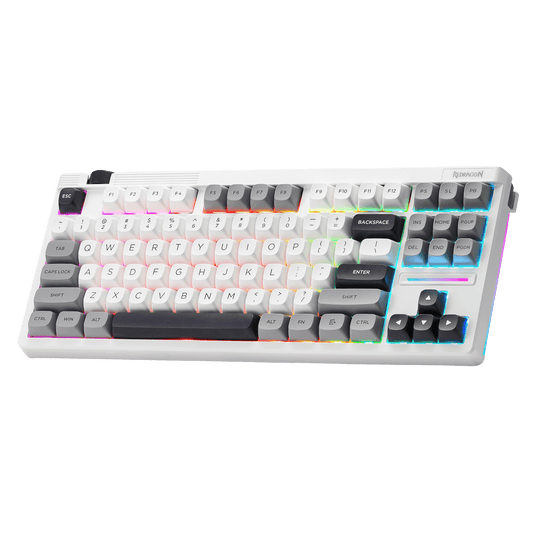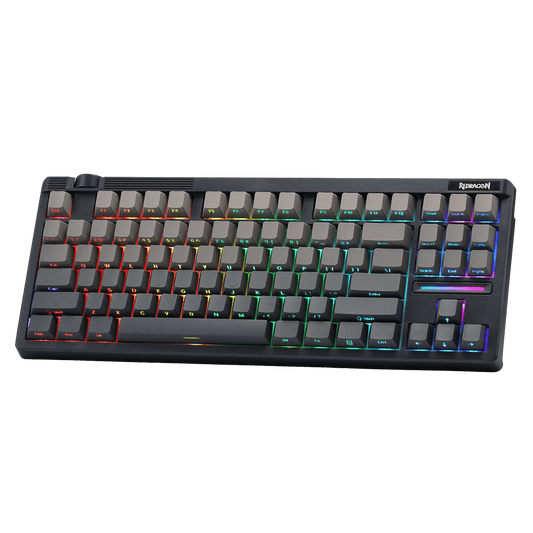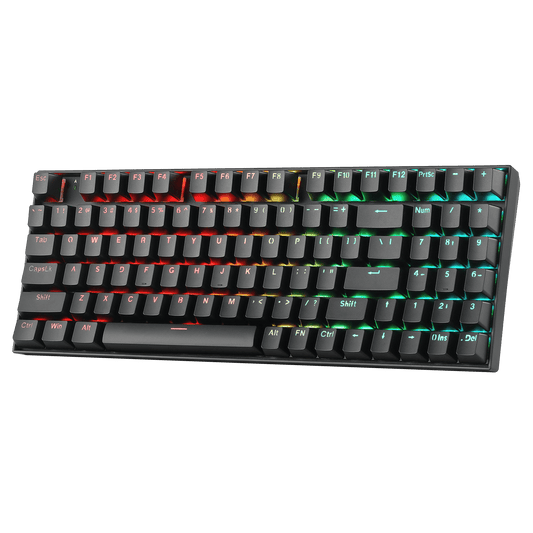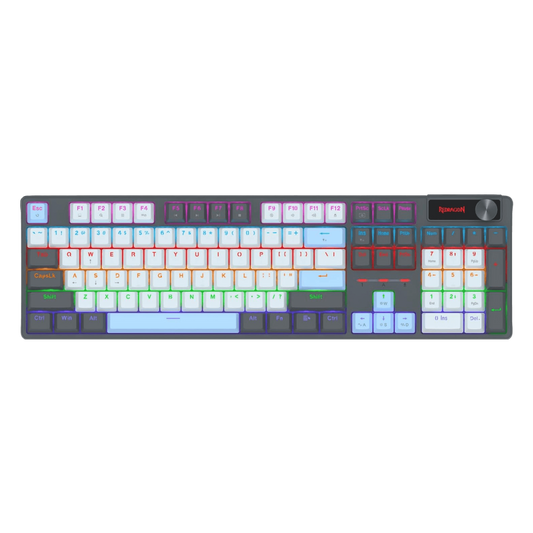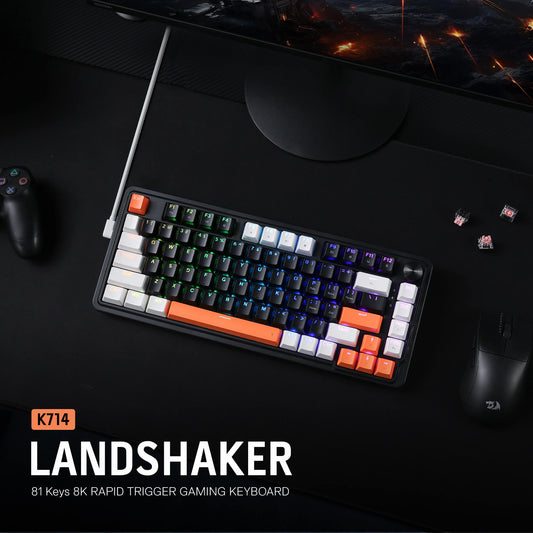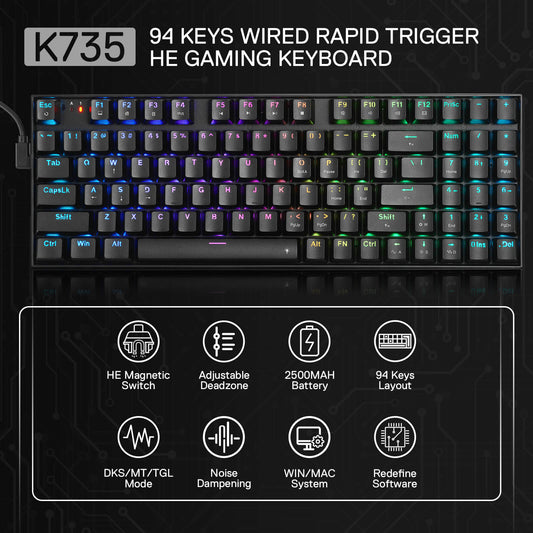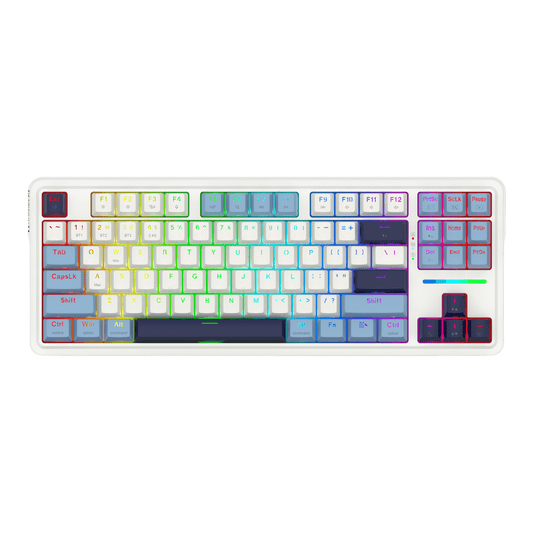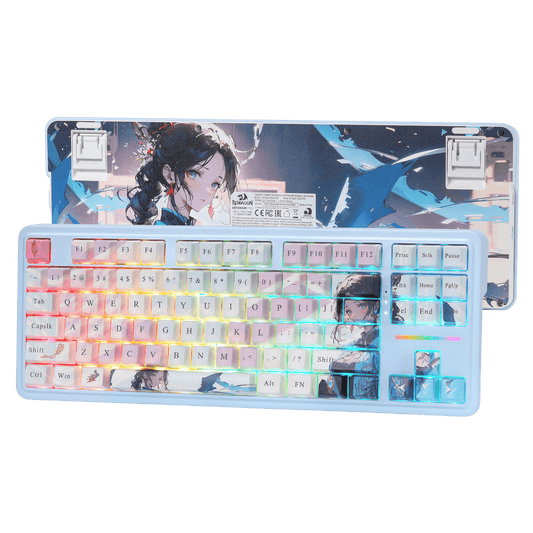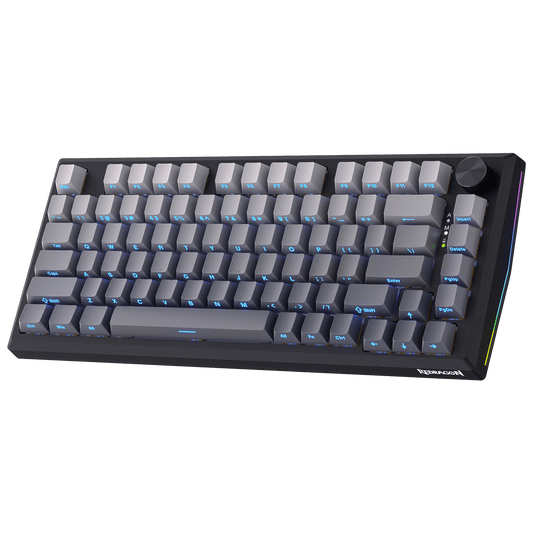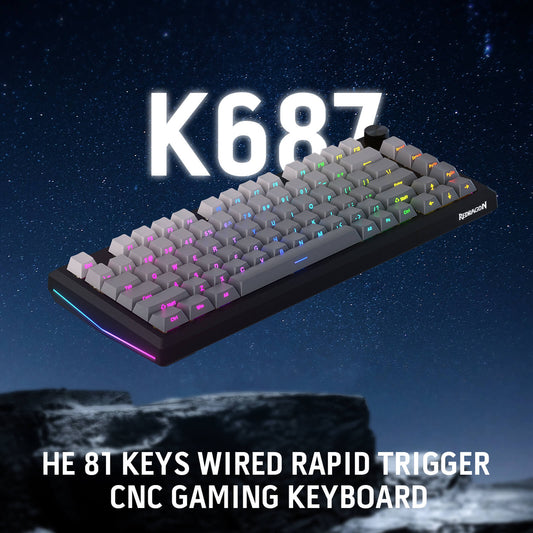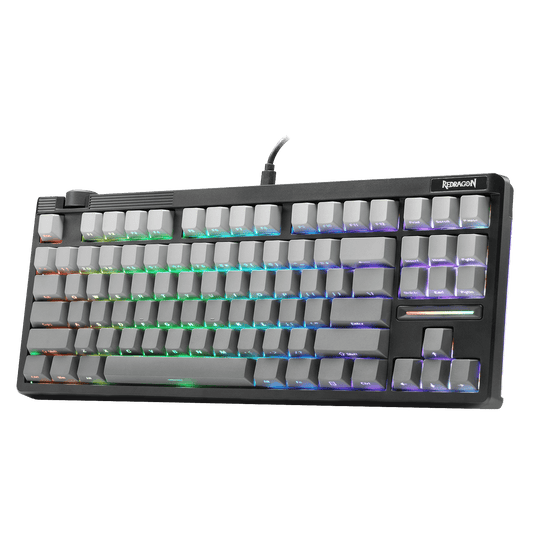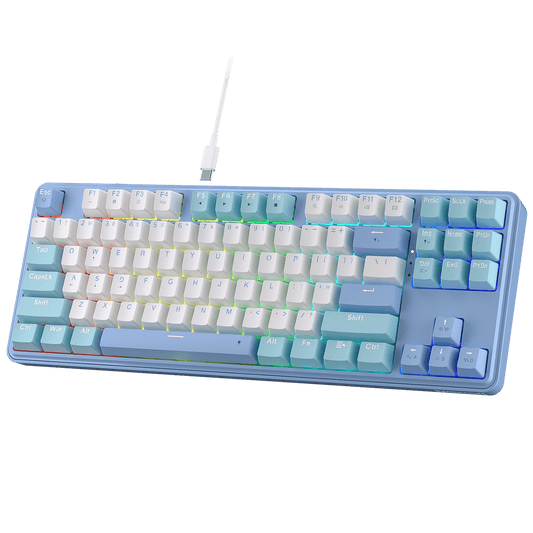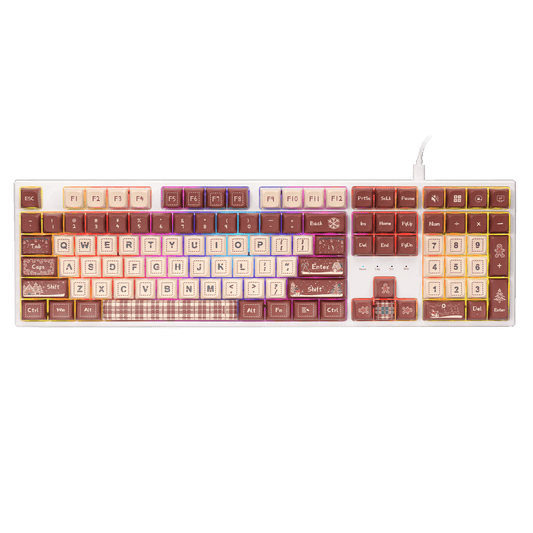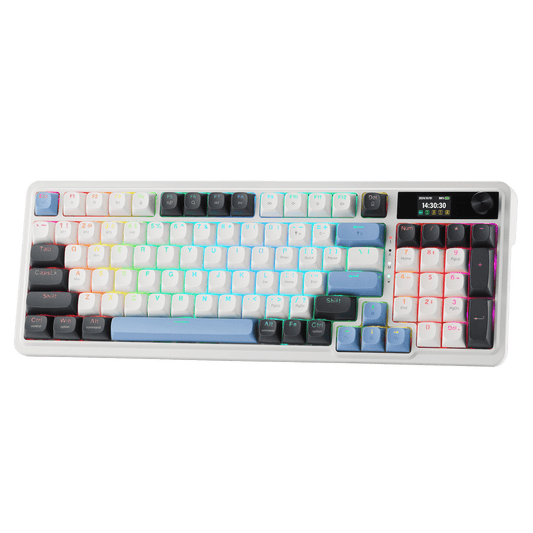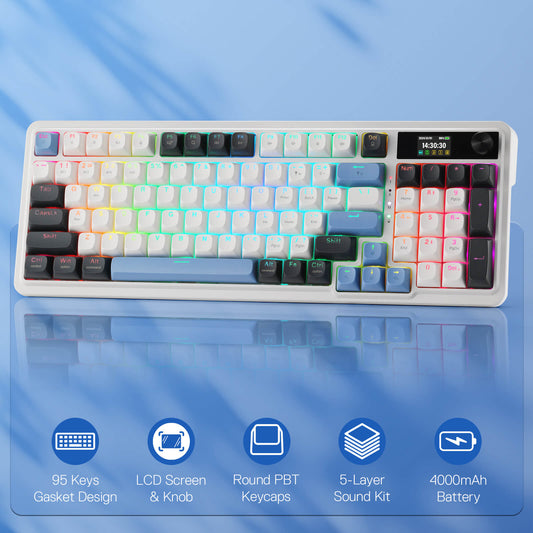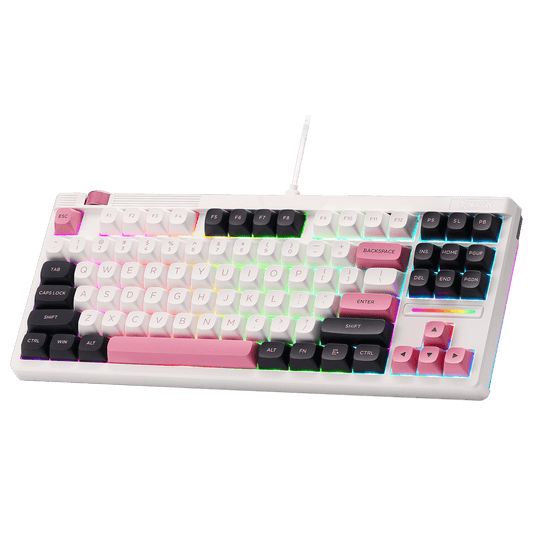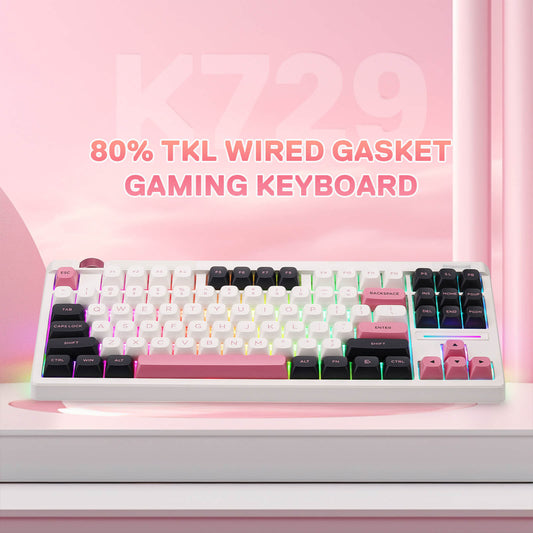Introduction
The landscape of mechanical keyboards has been dramatically transformed by their widespread popularity among both enthusiasts and professionals. This can be attributed to the remarkable tactile feedback, exceptional durability, and extensive customization options they bring to the table. One of the key aspects to consider when choosing a mechanical keyboard is its size, which directly impacts its functionality, portability, and overall user experience.
In this guide, we'll explore the various mechanical keyboard sizes, including full-size, TKL (tenkeyless), 60%, and more, to help you make an informed decision based on your preferences and needs.
Table of Contents
1. Why Does Size Matter?
2. Evolution of Keyboard Designs
3. Impact on User Experience and Productivity
4. Why Different Size Keyboards?
5. Understanding Key Terminology
6. Modifier Keys and Function Keys
7. Common Keyboard Sizes
8. How To Choose The Right Keyboard Size?
9. Conclusion
10. Frequently Asked Questions (FAQs)
Why Does Size Matter?

The significance of keyboard sizes and layouts in the realm of computing and human-computer interaction is profound, shaping the way individuals interact with digital devices and influencing their overall experience. Let's delve into the key aspects that highlight the significance of keyboard sizes and layouts:
-
Ergonomics and Comfort:
-
Different keyboard sizes and layouts impact ergonomic comfort by affecting hand placement, wrist angle, and overall typing posture. Proper ergonomics reduces the risk of repetitive strain injuries and enhances long-term user comfort.
-
Customization and Adaptation:
-
Keyboard sizes and layouts can be tailored to individual preferences and specific tasks, allowing users to create a personalized and optimized typing experience that aligns with their needs and habits.
-
Efficient Typing and Productivity:
-
The arrangement of keys and their accessibility influence typing speed, accuracy, and overall productivity. Well-designed layouts provide efficient access to frequently used keys and shortcuts, streamlining tasks.
-
Space Efficiency:
-
Different sizes cater to varying space requirements, ensuring that users can optimize their workspace layout. Compact layouts maximize desk space, making them suitable for small workstations, travel, and on-the-go usage.
-
Specialization and Focus:
-
Specific keyboard layouts cater to specialized tasks, such as gaming, coding, or data entry. These layouts enhance user performance in their respective domains by providing dedicated keys and optimized key placements.
-
Aesthetic Considerations:
-
Keyboard sizes and layouts contribute to the overall aesthetic of a workspace. The design, form factor, and layout choices can enhance the visual appeal and organization of a user's setup.
-
Portability and Mobility:
-
Smaller keyboard sizes are highly portable, making them ideal for professionals who work remotely, travel frequently, or require a compact setup for different locations.
-
Learning and Adaptation:
-
Adapting to different keyboard layouts and sizes can challenge users to learn new typing techniques and shortcuts, potentially enhancing their cognitive abilities and adaptability.
-
User Preference and Comfort:
-
The layout and size of a keyboard are highly subjective choices, allowing users to select options that align with their preferences and comfort levels for a more enjoyable computing experience.
-
Technological Innovation:
-
The evolution of keyboard sizes and layouts reflects ongoing technological innovation, ranging from mechanical switches and customizable keycaps to wireless connectivity and RGB lighting.
Evolution of Keyboard Designs

The evolution of keyboard designs is a captivating journey that mirrors the progression of technology, human interface needs, and aesthetic preferences. Spanning over a century, this evolution reflects our ever-changing relationship with computing devices. Here's a chronological overview of key milestones in the evolution of keyboard designs:
1870s-1920s: Typewriters and Early Mechanical Keyboards
- The typewriter, invented in the 1860s, introduced the QWERTY layout to optimize typing speed while minimizing mechanical jams.
- Early mechanical typewriters set the foundation for future keyboard designs, featuring a fixed layout and physical mechanisms for key presses.
1960s-1970s: Emergence of Computer Keyboards
- Computer terminals and mainframes popularized the use of electronic keyboards.
- The MIT Space-Cadet Keyboard (1960s) introduced special function keys and the "Control" key, shaping the modern layout.
- The first true computer keyboard, the Model 33 Teletype (1965), solidified the QWERTY layout's dominance.
1980s-1990s: Personal Computer Revolution
- Introduction of early personal computers like the Apple II (1977) and IBM PC (1981) standardizing keyboard layouts.
- Membrane keyboards with rubber domes emerged, reducing the mechanical complexity of key switches.
- Introduction of the IBM Model M (1985), a legendary mechanical keyboard, laid the foundation for tactile feedback.
2000s-2010s: Innovation and Customization
- Keyboards evolved with multimedia keys, volume controls, and integrated touchpads.
- The rise of laptop and chiclet-style keyboards with shallow key travel became popular for compactness.
- Mechanical keyboards saw a resurgence in popularity due to improved switches, offering tactile and audible feedback.
Present and Beyond: Modern Keyboard Trends
- Increased customization options with RGB lighting, programmable macros, and customizable keycaps.
- Compact layouts like Tenkeyless (TKL) and 60% keyboards cater to space-conscious users.
- Wireless and Bluetooth keyboards offer mobility and convenience.
- Specialized keyboards, such as ergonomic and split designs, aim to improve comfort and reduce strain.
Impact on User Experience and Productivity

Keyboard sizes wield a profound influence on user experience and productivity, intricately shaping the way individuals interact with technology and accomplish tasks. The effects are far-reaching and encompass several crucial aspects:
-
Ergonomics and Comfort:
- Ergonomic keyboard sizes enhance typing comfort and reduce strain.
- Users experience seamless typing, leading to sustained focus and reduced discomfort.
- Comfort-driven designs contribute to prolonged work sessions and improved productivity.
-
Task Efficiency and Specialization:
- Different sizes cater to specific tasks, optimizing workflows.
- Task-specific layouts streamline operations and lead to efficient task execution.
- Productivity is enhanced as users complete tasks more swiftly and accurately.
-
Tactile Feedback and Customization:
- Tactile key switches impact typing speed, accuracy, and user satisfaction.
- Customization options empower users to tailor keyboards to their needs.
- Personalized and engaging experiences boost user satisfaction and efficiency.
-
Aesthetic Appeal and Psychological Impact:
- Visual aesthetics impact workspace ambiance and user mood.
- Aesthetically pleasing setups create positive and focused work environments.
- Improved mood and focus contribute to enhanced creativity and productivity.
Why Different Size Keyboards?
Different size keyboards serve various purposes and cater to specific user preferences and needs. The availability of various keyboard sizes allows individuals to choose a layout that best aligns with their work, usage patterns, and ergonomic requirements.
Here's why different keyboard sizes exist:
- Functionality: Varied sizes cater to different tasks, from extensive typing to gaming.
- Limited Space: Smaller keyboards are ideal for confined areas.
- Portability: Compact keyboards are easier to carry, and useful for people on the move.
- Ergonomics: Different sizes can promote a more comfortable and natural typing posture.
- Gaming: Compact keyboards allow more room for quick gaming movements.
- Customization and Style: Various sizes enable customization and style expression.
-
Special Needs: Some sizes are suitable for individuals with specific requirements.
-
Learning and Adaptation: Different sizes may require adaptation and learning.
- Trends and Preferences: Trends and personal preferences influence size choice.
Understanding Key Terminology
In the realm of keyboards, certain terms hold significance in understanding how these input device’s function and feel. Let's delve into keycap, key switch, and key matrix:
The keycap is the visible, often removable, part of a keyboard key that you press with your fingers. It features the letter, number, symbol, or character associated with that specific key. Keycaps come in various shapes, sizes, and materials, which can influence the tactile feel and overall aesthetics of the keyboard

The key switch is the mechanism beneath the keycap that registers a keypress. It consists of several components, including a housing, a spring, and electrical contacts. Different types of key switches offer varying tactile feedback, actuation force, and acoustic feedback. Common switch types include mechanical switches, membrane switches, and scissor switches, each with its distinct characteristics.

The key matrix is the underlying grid system that organizes and registers keypresses. It's composed of rows and columns, with each key intersection forming a unique electrical circuit. When you press a key, it completes a circuit in the matrix, signaling the computer which key has been pressed.

(photo credit to @technologyuk)
Modifier Keys and Function Keys
Modifier keys and function keys are integral components of keyboard layouts, adding versatility and convenience to the typing experience.
-
Modifier Keys: Modifier keys, such as Shift, Control (Ctrl), Alt (Option on Mac), and Windows (Command on Mac), modify the input of other keys. By holding down a modifier key while pressing another key, you can initiate specific commands or type special characters. For example, using Shift while pressing a letter produces a capitalized version of that letter.
-
Function Keys: Function keys, often labeled as F1 through F12, are a row of keys typically located at the top of the keyboard. These keys have multifunctional roles, serving different purposes in different applications or operating systems. They are commonly used for shortcuts, system controls, and software-specific commands. For instance, F5 often refreshes a web page, and F11 toggles full-screen mode in many applications.
Understanding these key terms provides insight into the mechanics and functionality of keyboards, enabling users to make informed choices based on their preferences and requirements.
Common Keyboard Sizes
100% | 104-Key Keyboard | Full-Sized Keyboard
Layout and Features: The 100% | 104-Key Keyboard, often called the Full-Sized Keyboard, boasts a complete layout with alphanumeric keys, function keys, navigation keys, and a numeric keypad.
Keyboard Width and Height: Typically measuring around 17-18 inches in width and 6-7 inches in height, it offers a comprehensive yet sizeable form factor.
Pros:
- Comprehensive Layout: Full-sized design provides all standard keys and functions.
- Numeric Keypad: Dedicated numeric keypad aids data entry and calculations.
- Comfortable Typing: Wider key spacing contributes to comfortable typing.
Cons:
- Space Requirement: Larger form factor may limit desk space and mouse movement.
- Portability: Less suitable for travel due to size and weight.
Ideal Use Cases:
- Office Professionals: Ideal for typing-intensive tasks and regular computer usage.
- Data Entry and Finance: Well-suited for spreadsheet work and numeric input.
- Permanent Workstations: Suitable for setups with ample desk space.
Recommended Redragon Keyboards: HORUS K618, DEVARAJAS K556 SE, DHARMA PRO K556 PRO Aluminum Keyboard, BLUESIREN K654, DEVARAJAS K556, SURARA K582, VATA K580, HORUS K619
90%/ 96% | 100-Key Keyboard | Compact Full-Sized Keyboard
Layout and Features: The 90%/96% | 100-Key Keyboard, known as the Compact Full-Sized Keyboard, retains the full-sized layout while excluding the numeric keypad.
Keyboard Width and Height: Typically around 14-15 inches in width and 6-7 inches in height, it balances functionality and space-saving.
Pros:
- Efficient Layout: Provides essential keys while conserving desk space.
- Enhanced Workspace: Offers more room for mouse movement.
- Portability: Smaller size suits those who need mobility.
Cons:
- Numeric Keypad Absence: May inconvenience users reliant on numeric input.
- Learning Curve: Transitioning users might need time to adapt.
Ideal Use Cases:
- Compact Workstations: Optimizes space without sacrificing core functions.
- On-the-Go Professionals: Portable option for remote work and travel.
- Versatile Users: Balances functionality and space-saving.
Recommended Redragon Keyboards: IRELIA K658 PRO, GAREN K656 PRO, OLAF K648
80% | 87-Key Keyboard | Tenkeyless (TKL) Keyboard
Layout and Features: The 80% | 87-Key Keyboard, or Tenkeyless (TKL) Keyboard, removes the numeric keypad while retaining essential functionality.
Keyboard Width and Height: Usually around 14 inches in width and 6 inches in height, it balances size and usability.
Pros:
- Space Efficiency: Optimizes desk space while maintaining crucial keys.
- Enhanced Ergonomics: Promotes a centered typing and mouse position.
- Portability: Lighter and more portable than full-sized models.
Cons:
- Numeric Keypad Omission: Not ideal for tasks requiring frequent numeric input.
- Learning Curve: Users transitioning might need time to adjust.
Ideal Use Cases:
- Professionals: Balances functionality and space for efficient setups.
- Gamers: Offers more space for mouse movement in gaming scenarios.
- Portable Workstations: Ideal for those needing a mobile setup.
Recommended Redragon Keyboards: KUMARA K552, VISHNU K596, Horus TKL K621, HORUS K622
Compact (75%) Keyboards
Layout and Features: Compact (75%) Keyboards retain alphanumeric keys while omitting the function row and navigation cluster.
Keyboard Width and Height: Around 12-13 inches in width and 6-7 inches in height, they strike a balance between size and usability.
Pros:
- Streamlined Design: Minimizes desk footprint while retaining essential keys.
- Enhanced Focus: Ideal for tasks requiring minimal distraction.
- Portability: More compact than traditional layouts.
Cons:
- Limited Function Keys: Lack of function row might necessitate function key combinations.
- Adaptation: Users transitioning might require time to adapt.
Ideal Use Cases:
- Coders and Writers: Offers a distraction-free workspace.
- Minimalist Setups: Suited for those prioritizing simplicity and efficiency.
- Portable Workstations: Fits professionals on the move.
Recommended Redragon Keyboards: AZURE K652, POLLUX K628, POLLUX K628 PRO, POLLUX K628 PRO SE
65% | 68-Key Keyboard | Compact Keyboard
Layout and Features: The 65% | 68-Key Keyboard retains alphanumeric keys and a few essential function keys.
Keyboard Width and Height: Around 11-12 inches in width and 5-6 inches in height, it offers high portability.
Pros:
- Compact Layout: Optimizes space while retaining essential keys.
- Ultra-Portable: Ideal for travel and limited desk space.
- Ergonomic Design: Encourages a centered typing and mouse position.
Cons:
- Limited Functionality: Fewer keys may require function key combinations.
- Learning Curve: Users transitioning might require time to adapt.
Ideal Use Cases:
- Travelers and Digital Nomads: Perfect for professionals on the move.
- Minimalists: Ideal for streamlined setups with core tasks in focus.
- Remote Work: Suited for efficient setups in various locations.
Recommended Redragon Keyboards: CASTOR K631 PRO 65% Mint , CASTOR K631 PRO SE, CASTOR K631 Grey, CASTOR K631 PRO Full-Transparent, CARAXES K644 SE, SHACO K641 PRO, CASTOR K631 PRO
60% | 61-Key Keyboard | Mini Keyboard
Layout and Features: The 60% | 61-Key Keyboard, known as the Mini Keyboard, offers a compact design omitting function and navigation keys.
Keyboard Width and Height: Approximately 10-11 inches in width and 4-5 inches in height, it's highly portable.
Pros:
- Minimalistic Design: Maximizes space efficiency, suitable for minimalist setups.
- High Portability: Easily fits into bags for work on the go.
- Uncluttered Workspace: Reduces desk clutter and distractions.
Cons:
- Reduced Functionality: Lack of dedicated keys might require function key combinations.
- Learning Curve: Users transitioning might need time to adapt.
Ideal Use Cases:
- Coders and Programmers: Perfect for focused coding tasks.
- Traveling Professionals: Portable option for working in various locations.
- Compact Workstations: Fits smaller workspaces and travel scenarios.
Recommended Redragon Keyboards: DRACONIC K530 PRO, FIZZ K617, FIZZ K617 SE Full-Transparent, NOCTIS K632 PRO, DRAGONBORN K630
40% | 45-50-Key Keyboard
Layout and Features: The 40% | 45-50-Key Keyboard offers the most compact design with essential alphanumeric keys.
Keyboard Width and Height: Around 9-10 inches in width and 4-5 inches in height, it prioritizes portability.
Pros:
- Ultimate Portability: Fits into small bags or pockets with ease.
- Minimalist Focus: Streamlined design promotes a clutter-free workspace.
- Unique Aesthetics: Appeals to those seeking unconventional setups.
Cons:
- Minimal Functionality: Limited keys may require complex key combinations.
- Steep Learning Curve: Users transitioning might require time to adjust.
Ideal Use Cases:
- Ultra-Portable Needs: Ideal for those prioritizing mobility and minimalism.
- Unique Aesthetics: Suits users aiming for distinctive and unconventional setups.
- Compact Workstations: Suited for small workspaces and travel scenarios.
Recommended Redragon Keyboards:
- Redragon K585: Offers 42 keys in a compact layout, balancing portability and functionality.
How To Choose The Right Keyboard Size?
Selecting the perfect keyboard size is a pivotal decision that directly impacts your typing experience, comfort, and overall productivity. To make an informed choice that aligns with your needs, consider the following factors:
Conclusion

Choosing the right keyboard size is a significant decision that can greatly impact your comfort, productivity, and overall computing experience. By understanding the various keyboard sizes available and their unique characteristics, you can make an informed choice that aligns with your specific needs and preferences.
From the expansive layout of the Full-Sized Keyboard (100% | 104-Key) to the compact and portable design of the 40% | 45-50-Key Keyboard, each size offers a distinct set of advantages and considerations. Writers seeking uninterrupted focus, gamers aiming for agile key presses, creative professionals emphasizing aesthetics and efficiency, and office professionals optimizing their workspace can all find a suitable keyboard size tailored to their tasks.
Remember to consider factors such as your workspace dimensions, typing habits, ergonomic preferences, and the types of tasks you frequently engage in. A well-chosen keyboard size can enhance your comfort, efficiency, and overall satisfaction as you interact with your computer.
As technology continues to evolve, keyboard designs and sizes may adapt to new trends and user demands. Stay informed and remain open to trying different keyboard sizes as your needs evolve over time. Ultimately, the right keyboard size empowers you to work, create, and play in a way that suits your unique style and requirements.
Frequently Asked Questions (FAQs)
What is the ideal keyboard size for gaming?
The ideal keyboard size for gaming depends on personal preference and playstyle. Many gamers prefer Tenkeyless (TKL) (80% | 87-Key) or Compact (65% | 60% | 40%) keyboards for faster mouse movement. However, some gamers still enjoy Full-Sized (100% | 104-Key) keyboards for their dedicated gaming features.
What is the Best Keyboard Size for Programmers?
Programmers often appreciate Tenkeyless (TKL) (80% | 87-Key) keyboards due to the balance between compactness and functionality. Compact (75% | 60% | 40%) keyboards can also suit programmers seeking a clutter-free workspace. Ultimately, the best size depends on the programmer's typing preferences and the need for function keys.
Which layout is suitable for heavy typists?
For heavy typists, Full-Sized (100% | 104-Key) keyboards offer ample key spacing and a dedicated numeric keypad, enhancing comfort during extended typing sessions. Tenkeyless (TKL) (80% | 87-Key) keyboards can also provide a comfortable typing experience without the numeric keypad.
Do compact keyboards hinder typing speed?
Compact keyboards, such as Compact (75% | 60% | 40%) layouts, might require a short adjustment period due to their reduced size. Once accustomed, many users find that typing speed and accuracy can match or even exceed that of larger keyboards. Practice and familiarity play a key role in typing speed on compact layouts.
What is the best keyboard size?
The best keyboard size depends on your specific needs and preferences. Full-Sized (100% | 104-Key) keyboards offer complete functionality, while smaller sizes like Tenkeyless (TKL) (80% | 87-Key) or Compact (75% | 60% | 40%) keyboards provide space-saving benefits and portability.
Are shorter keyboards better?
Shorter keyboards, like Compact (75% | 60% | 40%) layouts, can be better for users who prioritize a clutter-free workspace, portability, or specific tasks. However, the "better" option varies based on individual requirements, ergonomic considerations, and typing habits.
Why are small keyboards so popular?
Small keyboards have gained popularity due to several reasons. They save desk space, enhance portability, and often have a sleek and minimalist design. Additionally, users who don't rely heavily on function keys or numeric input find small keyboards to be efficient and comfortable for their tasks.


































